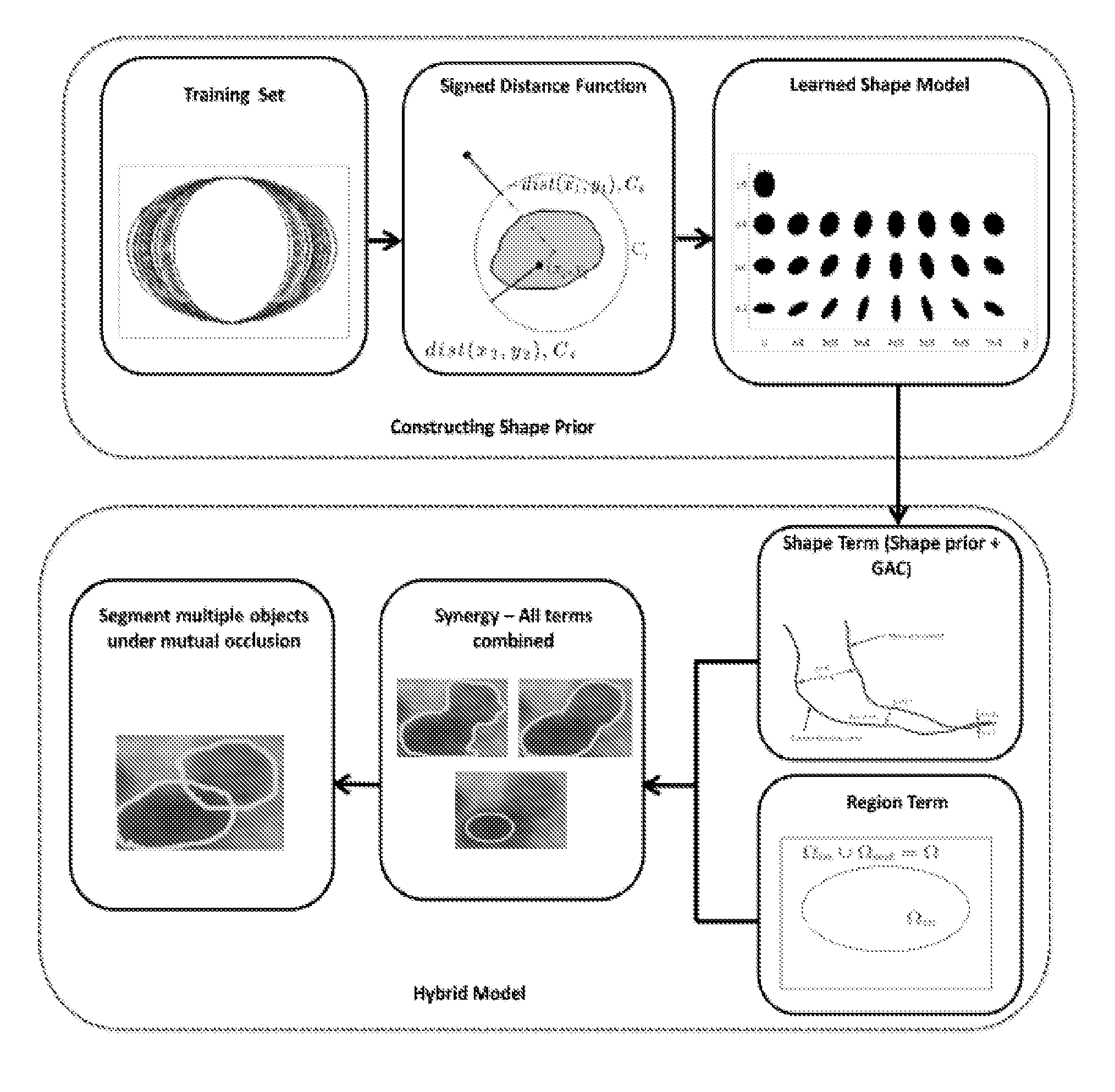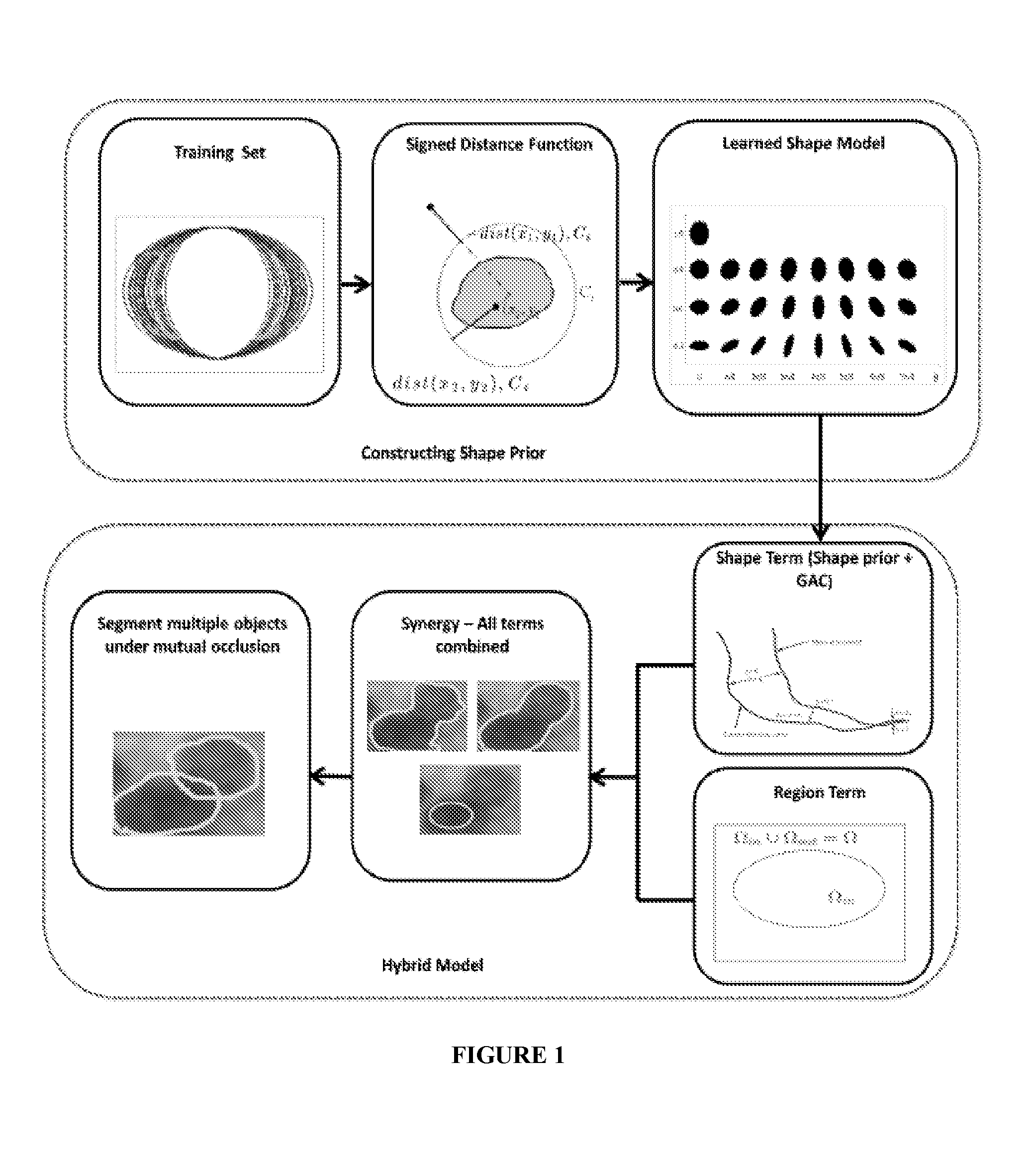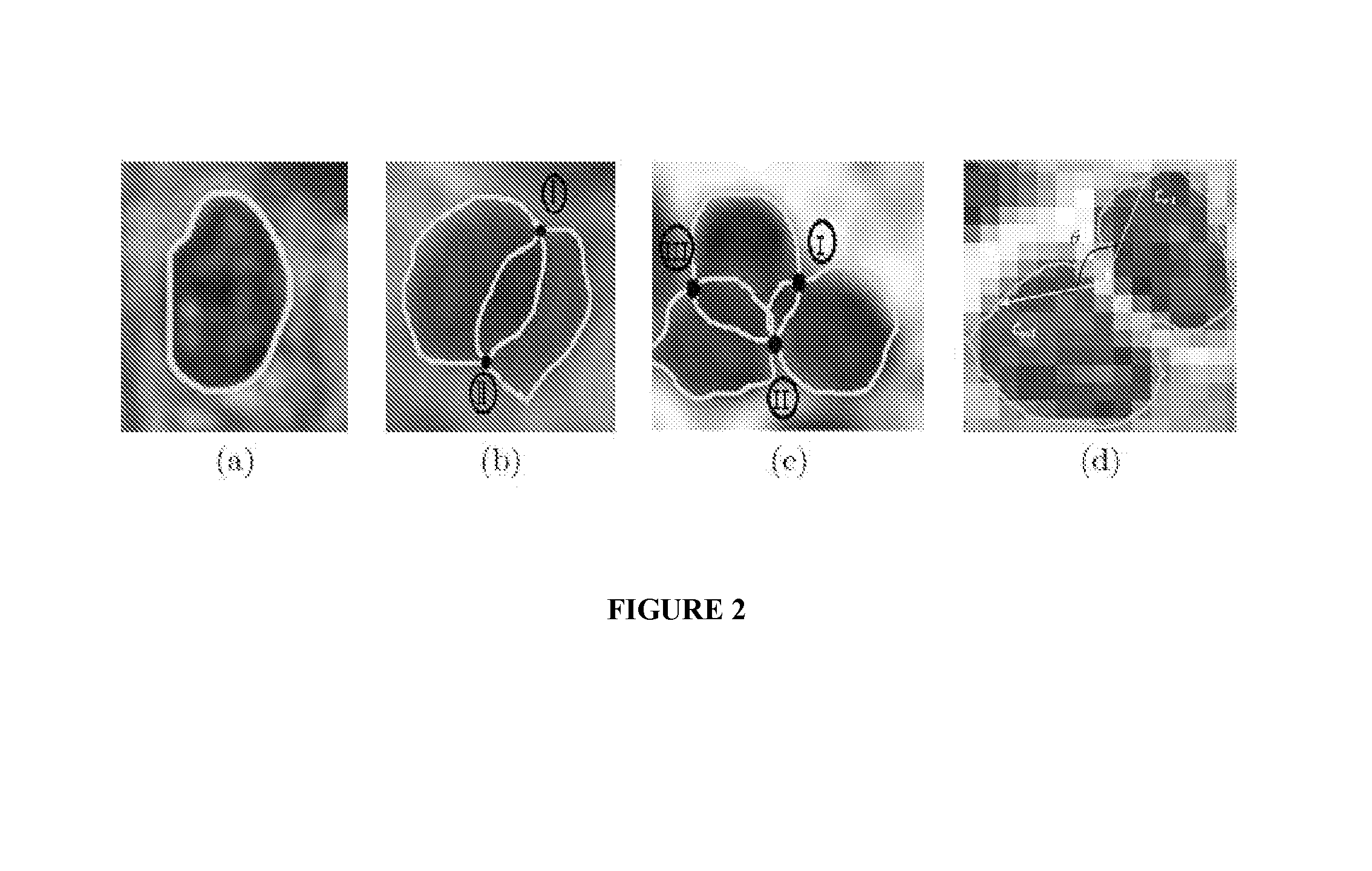Method and apparatus for shape based deformable segmentation of multiple overlapping objects
a deformable segmentation and object technology, applied in the field of shape based deformable segmentation of multiple overlapping objects, can solve the problems of limited asms in their inability to (a) resolve boundaries, limited asms by point correspondence issues, and inability to resolve multiple overlapping objects, so as to minimize variational energy and minimize variational energy
- Summary
- Abstract
- Description
- Claims
- Application Information
AI Technical Summary
Benefits of technology
Problems solved by technology
Method used
Image
Examples
example 1
Segmentation with Watershed Initialization and Concavity Detection
[0445]The method steps according to the hybrid adaptive active contour model for segmenting single non-overlapping objects or multiple overlapping / occluded objects, such as nuclei or lymphocytes on an image scene of a histological sample from a cancer patient are depicted in a flow chart shown in FIG. 1.
[0446]The segmentation method according to the hybrid adaptive active contour model includes the elective incorporation of variational terms based on the detection of concavity points as shown in FIG. 2. FIG. 3 shows snapshots of the constituent modules of the hybrid adaptive active contour model.
[0447]For example, the number of detected concavity points, cw≦1 indicates presence of a single non-overlapping object, such as a nucleus in the image scene of the histological sample. In such cases, the shape prior is not necessary for the initializing step and the hybrid adaptive active contour model is reduced only based on...
example 2
Segmentation of Nuclei and Lymphocytes of a Prostate Cancer Histological Sample
[0449]A. Model Parameters and Data Description
[0450]Size of a training set is determined empirically depending on the complexity of the shape of interest. According to one embodiment, the size of a training set is 5 or more shapes. According to one embodiment, size of a training set is 10 or more shapes. According to one embodiment, size of a training set is 15 or more shapes. According to one embodiment, size of a training set is 20 or more shapes. According to one embodiment, size of a training set is 25 or more shapes. According to one embodiment, size of a training set is 30 or more shapes. According to one embodiment, size of a training set is 35 or more shapes. According to one embodiment, size of a training set is 40 or more shapes. According to one embodiment, size of a training set is 45 or more shapes. According to one embodiment, size of a training set is 5 or more shapes.
[0451]A training set o...
experiment 1
1) Experiment 1
Evaluating Overlap Resolution
[0458]This example demonstrates the ability of the hybrid adaptive active contour model to correctly resolve the overlap between all intersecting lymphocytes and nuclei across 114 breast and prostate cancer histopathology images.
PUM
 Login to View More
Login to View More Abstract
Description
Claims
Application Information
 Login to View More
Login to View More - R&D
- Intellectual Property
- Life Sciences
- Materials
- Tech Scout
- Unparalleled Data Quality
- Higher Quality Content
- 60% Fewer Hallucinations
Browse by: Latest US Patents, China's latest patents, Technical Efficacy Thesaurus, Application Domain, Technology Topic, Popular Technical Reports.
© 2025 PatSnap. All rights reserved.Legal|Privacy policy|Modern Slavery Act Transparency Statement|Sitemap|About US| Contact US: help@patsnap.com



